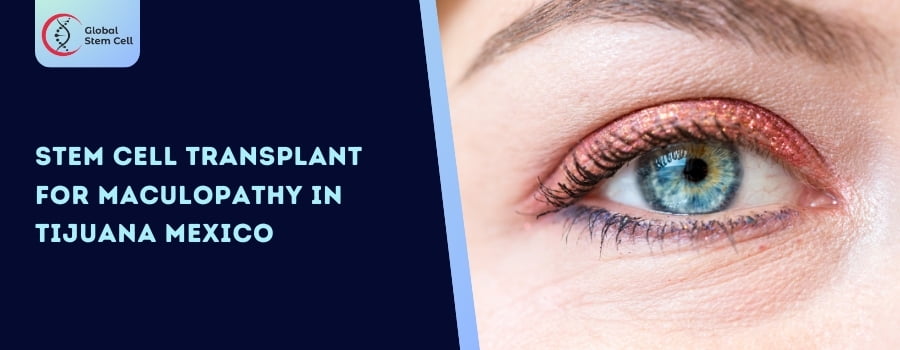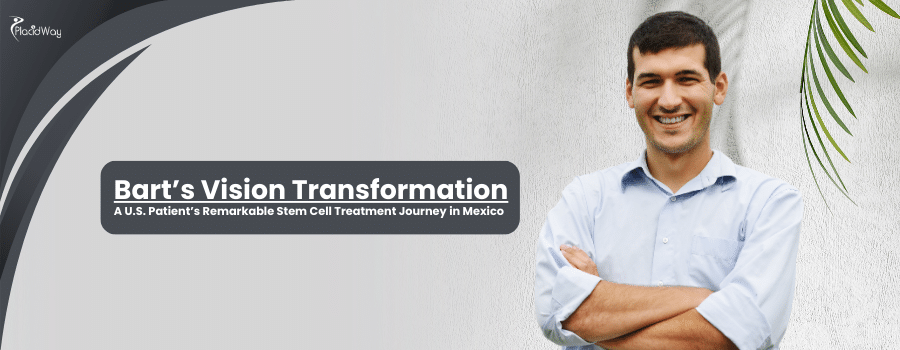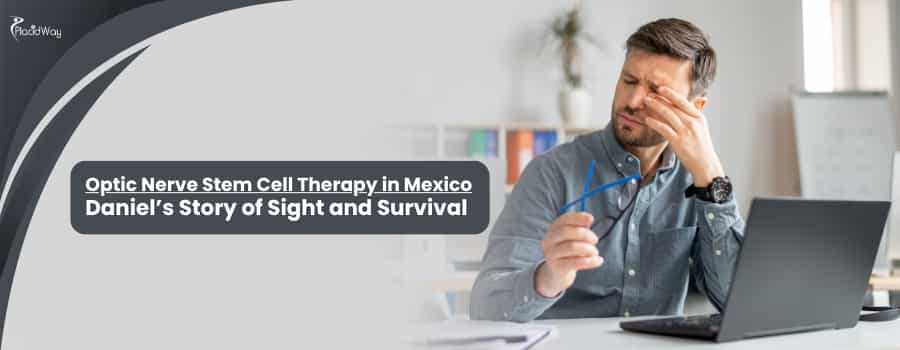
Maculopathy, also called macular degeneration, is a very serious eye problem. It affects the middle part of the back of your eye, which is called the macula. This can make it really hard to see clearly, making it tough to do things like reading, driving, and even recognizing people’s faces.
Searching for trusted stem cell clinics in Tijuana?
Most treatments for maculopathy are meant to slow it down, but they don’t fix it completely. But now, stem cell therapy is a new treatment that gives hope. In this blog post, we will talk about how stem cell therapy can help, how it works, and important things to think about if you want to get this treatment in Tijuana, Mexico.
Understanding Maculopathy
Maculopathy includes different kinds of problems that can hurt the macula, such as:
- Age-Related Macular Degeneration (AMD): AMD is the most common kind of maculopathy. It mostly happens to older people. There are two types: dry AMD, which makes the macula thin, and wet AMD, which happens when strange blood vessels grow under the retina and cause damage.
- Diabetic Maculopathy: This kind of maculopathy happens in people who have diabetes. It is caused by changes in the small blood vessels in the eye, which can lead to swelling and damage in the macula.
- Myopic Maculopathy: This condition happens in people with very bad nearsightedness. It happens because the eye becomes too long, which causes damage to the macula.
- Inherited Maculopathies: Some people are born with genes that affect the macula, like Stargardt disease and Best’s disease.
What is Stem Cell Therapy for Maculopathy?
Stem cell therapy is a treatment that uses special cells to fix and heal damaged parts of the body. For maculopathy, stem cell therapy is used to try to repair or replace the cells in the retina that are damaged, help people see better, and slow or stop the disease from getting worse. The types of stem cells used include:
- Embryonic Stem Cells (ESCs): These cells can turn into any kind of cell in the body, including eye cells. They come from very early embryos.
- Induced Pluripotent Stem Cells (iPSCs): These are adult cells that scientists change so they can act like embryonic stem cells. They can turn into eye cells too, and they are less controversial than ESCs.
- Mesenchymal Stem Cells (MSCs): These cells come from adult tissues like bone marrow or fat. They help lower inflammation and can help repair tissues.
Why Choose Tijuana for Stem Cell Therapy?
Tijuana is a popular place for people who want medical care, including stem cell therapy for maculopathy. Here are some reasons why:
- Close to the United States: Tijuana is near the U.S. border, which makes it easy for people in the U.S. to get there. Many clinics in Tijuana help people from other countries, which makes it a good choice for treatment.
- Good Quality Medical Facilities: Tijuana has modern clinics with good technology and doctors who follow international standards.
- Expert Doctors: The doctors in Tijuana are well-trained and know a lot about stem cell therapy. Many have studied in the U.S. and other advanced places.
- Affordable Treatment: Stem cell therapy in Tijuana costs less than in the U.S. and some other places, but the care is still very good.
- New Treatments: Tijuana clinics are known for offering the latest and most advanced treatments, especially in regenerative medicine. They use new methods to help patients get better care.
Leading Stem Cell Clinic in Tijuana
ProgenCell is a well-known stem cell clinic in Tijuana, Mexico. They offer many kinds of stem cell treatments to help people with different health problems. The clinic mainly uses stem cells taken from the patient’s own body, like bone marrow or fat. ProgenCell helps people with different conditions, like joint problems, nerve issues, and immune system diseases.
Some important things about ProgenCell:
- Experienced Team: The doctors and staff at ProgenCell are very experienced. They work hard to make sure each patient gets the best care.
- Modern Facilities: The clinic has good technology and modern facilities to make sure the treatments are safe and work well.
- Complete Care: ProgenCell takes care of patients from the first visit to the last. They make treatment plans that are just right for each patient.
- Focus on Safety and Quality: The clinic follows strict rules to make sure all treatments are safe and done well.
- International Patient Support: ProgenCell helps people from all over the world. They can help with travel plans and finding a place to stay.
The Treatment Process
- Initial Consultation and Assessment: Patients first have a check-up to see if stem cell therapy is right for them. The doctor will look at their health history, symptoms, and past treatments. Tests like OCT (a special eye scan) may be done to see how damaged the macula is.
- Personalized Treatment Plan: After the assessment, the doctor makes a special plan just for that patient. This plan explains what kind of stem cells will be used and how many treatments are needed.
- Stem Cell Harvesting: If the patient’s own stem cells are used, they are taken from bone marrow or fat. If donor stem cells are used, they come from umbilical cord tissue or embryonic stem cells.
- Stem Cell Administration: The stem cells can be given in different ways:
- Intravitreal Injection: Injecting the stem cells into the eye.
- Subretinal Injection: Putting the stem cells under the retina.
- Systemic Administration: Putting the stem cells into a vein, and they travel to the damaged area.
- Post-Treatment Care: After the treatment, the patient is watched to make sure they are okay. There are follow-up visits to see how well the treatment is working, and the doctor may suggest other things to help, like vitamins or eye exercises.
Potential Benefits of Stem Cell Therapy for Maculopathy
- Vision Improvement: Stem cell therapy can help fix damaged eye cells, which may make it easier to see. Some people say they can read, see faces, and do other things better.
- Slowing Disease Progression: Stem cell therapy might help slow down or even stop the disease from getting worse, so people can keep the vision they have.
- Better Quality of Life: If vision improves, people can do more things by themselves, which makes life easier and better.
Considerations and Risks
While stem cell therapy can be very helpful, there are things to think about:
- Clinical Evidence: The research on stem cell therapy for maculopathy is still being done. It is important to talk with doctors about what to expect.
- Regulatory Approval: Make sure the clinic you choose follows the right rules and has good practices.
- Individual Variability: People may have different results. Some people may get a lot better, and some may only get a little better.
- Potential Risks: Like any treatment, there can be risks, like infections or no change in vision. It is important to talk about these risks with your doctor.
FAQs
How much does stem cell therapy for maculopathy cost in Tijuana?
The cost is usually less than in the U.S. or other countries, but it depends on the clinic and the type of stem cells. Contacting the clinic directly for more information is best.
How can I choose the right clinic in Tijuana?
Look for clinics with good reviews, experienced doctors, and that follow safety standards.
Can international patients receive stem cell therapy in Tijuana?
Yes, many clinics help people from other countries. They can also help with travel plans and finding a place to stay.
Is stem cell therapy for maculopathy approved by regulatory bodies?
Stem cell therapy is still considered experimental for maculopathy. It is important to check the clinic’s credentials and make sure they follow the rules.
What should I expect during the initial consultation?
Doctors will look at your health history and do tests to see if stem cell therapy is right for you. This is also a good time to ask questions and learn more about the treatment.
If you are thinking about stem cell therapy for maculopathy, talk to trusted clinics in Tijuana to learn more. Stem cell therapy might be a way to see better and live a happier life.generative medicine.




